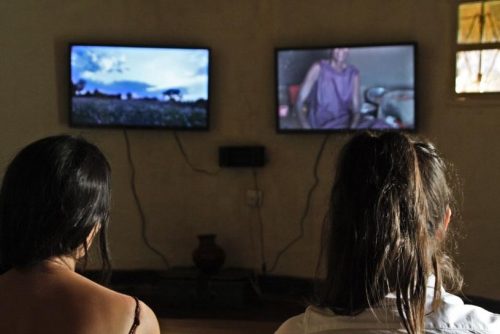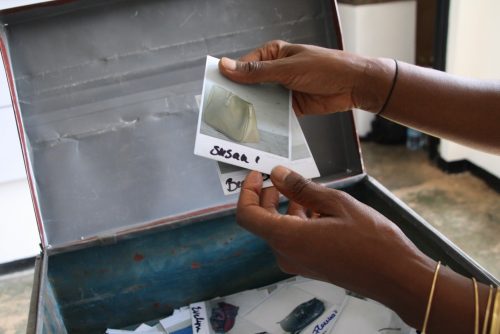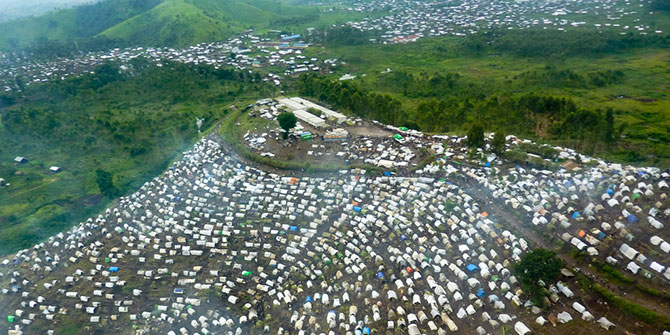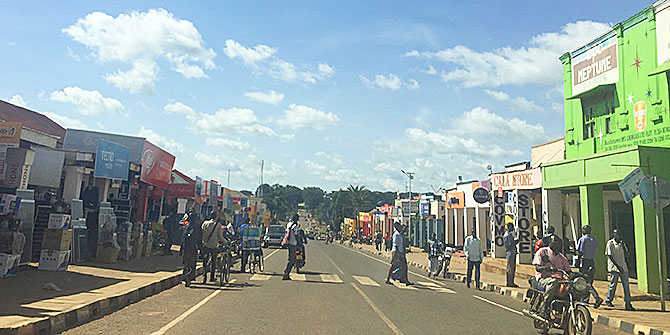Visual mediums have the power to reframe the realities of our lived experiences, conveying stories uneasily portrayed in written text. A research project on human displacement brings together researchers and artists to think about how people want to be represented in their cycles of movement and return, which encourages the subject and viewer to engage with difficult topics through an artistic lens.
This post is part of our #LSEReturn series, exploring themes around human displacement and return.
‘Our brains easily remember images, and this makes visual language one of the strongest.’
Images have historically been used to manipulate audiences into visceral, emotional reactions or to sensitise communities to particular lifestyle changes. Imagery in the fine arts is also used to convey stories that are not easily portrayed in written text. Central Africa has experienced repetitive forms of mass displacement for most of the past century, and the lived realities of forced migration are often lost in a sea of horrific images of refugees, along with spreadsheets of data, discussions of government and NGO funding cycles and organisational jargon.
The Syrian photographer and refugee Omar Imam says:
‘I was concerned that stereotypical images of refugees work in a loop, with refugees themselves giving the press what is expected from them. The foreign photographers come with their blonde hair and good cameras and show empathy, while the other side shows victimization.’
Rather than taking a clinical approach, the LSE’s Politics of Return project has focused on the dynamics of return and reintegration in the Central African Republic, the Democratic Republic of Congo, Uganda and South Sudan. The project and its associated researchers and artists have used different mediums to think about how people want to be represented in their cycles of displacement and return, with their works displayed locally.

The When We Return exhibition, or Ka Wadwogo in Acholi, represents the culmination of the three-year project. On display at the TAKS (Through Art Keep Smiling) Centre in Gulu, northern Uganda, the exhibition brought together works by Bathsheba Okwenje, Willy Karekezi and Kusa Kusa Maski Gael from the Politics of Return residency at 32° East Ugandan Arts Trust, as well as a film from Ben Mergelsberg and cartoons from artists Didier Kassaï, Thembo Kash, Tom Dai and Charity Atukunda. Participants were invited to engage with the work through a series of panels that promoted the interaction of researcher, artist, subject and viewer.
According to curator Kara Blackmore, the works represent ‘collective social portraits’. The purpose of artwork is to expand the biography that researchers establish in their work. Kanyo Love, by Okwenje, uses physical and emotional layers to show the biographies of Lord’s Resistance Army (LRA) wives, through text, photography, audio and physical objects. Maski’s Three Women on the Lake uses collage layering to take a refugee’s reality and recompose it in a surreal world. Karekezi paints on bodies and canvas to create questions on return, or why we do not. Mergelsberg’s Bush Camp piece questions our sense of documentary film. Works are not shown as static, fixed in time and place, but rather as dynamic and influencing and being influenced by context.

Cartoons created a more accessible format for understanding research. Blackmore elaborates that it is the ‘grammar’ of images that dominates this exhibition on displacement and migration. Extremely powerful, images and are open to their own subjective interpretation by each and every viewer. She says, ‘the artwork and research itself is more of a grammar, the way you punctuate the rhythm of that reality and how you create a mechanism for making sense of that language.’ Visual imagery is able to elicit emotional responses when the written word is not enough.
Ultimately, the accompaniment of visual imagery through mixed media art, painting, film and cartoons supports the creation of a new way people and ideas can be represented. Centreing the exhibition in Gulu provided the opportunity for subjects of the artworks to be viewers themselves. Okwenje invited former LRA wives to view their portraits in her installation, while Maski invited the women in his photographs that compose the collage to view the works.

The artists, collaborators, researchers and curator are constantly moving and engaging with the work, research and space in a way that invites new perspectives. By casting the subject in a collaborative role rather than a passive one, artists, subjects and participants alike can engage meaningfully with difficult topics through an artistic lens, and challenge the stereotypical portrayals and mountains of data to which we are all subjected.

All photos by Meital Kupfer. When We Return was on display at TAKS Centre in Gulu, Uganda from 25 July – 14 August 2019.





